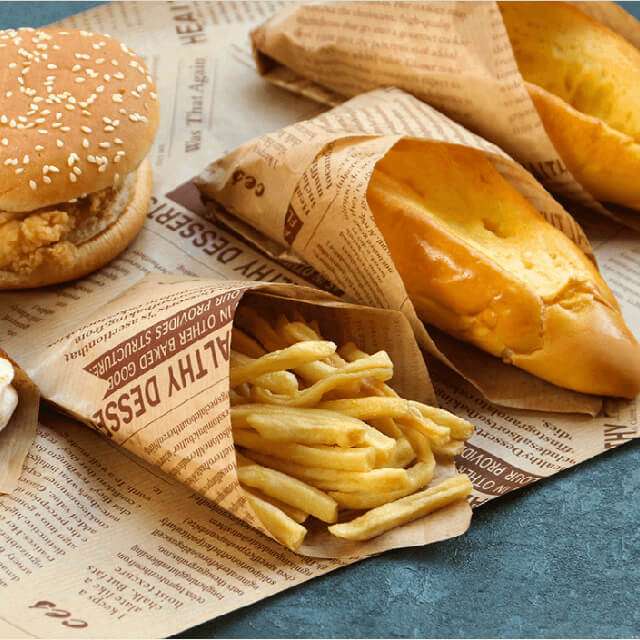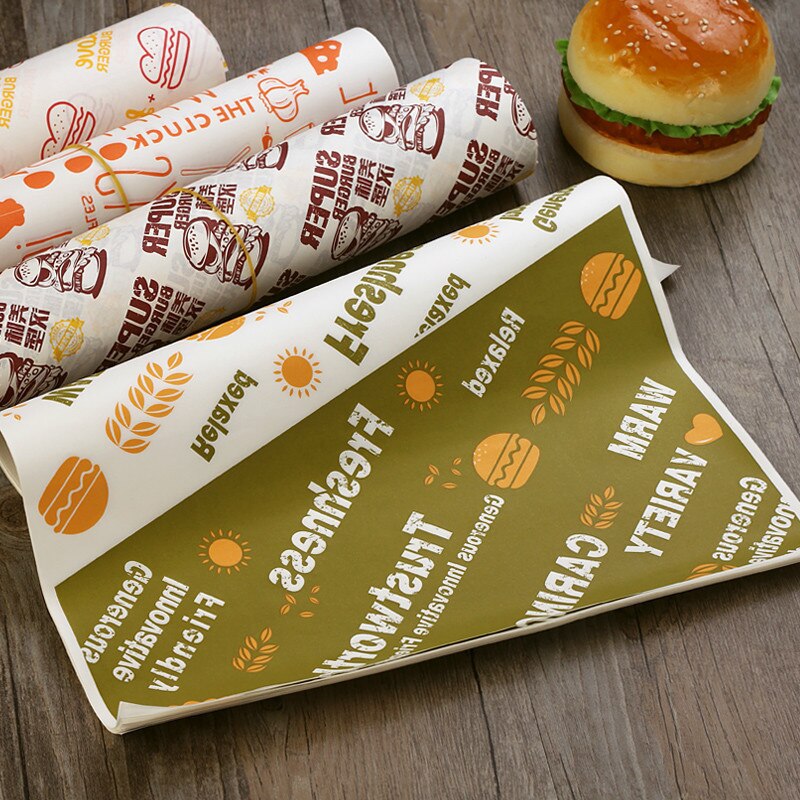The base material of the waterproof and oil-proof cardboard used for takeaway food packaging containers is made of bleached chemical pulp through a special process, and then dried after surface sizing. Although the surface layer has been sizing, the roughness has been reduced, but the fibers on the surface of the paper are still exposed to a large number of polar hydroxyl groups with strong hydrophilicity, the high air permeability of the paper and the capillary phenomenon of the fibers, the effect of water and oil infiltration is still good.
Cardboard often adopts the method of adding in pulp or surface modification to give the paper special properties such as waterproof, oil-proof and antibacterial. Surface modification can be done by coating method. After drying, a film with high barrier properties is formed to enhance the waterproof and oil-repellent properties of the paper; reducing the surface energy can improve the anti-wetting properties of the substrate; preparing coated paper with a certain barrier material, By enhancing its surface roughness, a superhydrophobic and superoleophobic effect can be obtained.
Some functional groups of chitosan are replaced by carboxymethyl groups to form carboxymethyl chitosan (CMCS), and the molecular chain has a large number of hydroxyl, amino and carboxymethyl functional groups, which further improve the water solubility and film-forming properties of CMCS. The hydroxyl group on CMCS has strong polarity and has a certain repellency to oil, while the amino group is positively charged, which will adsorb oil molecules and prevent oil molecules from penetrating and soaking the paper.
Polylactic acid (PLA) is one of the hotspots in the research of degradable materials worldwide, which solves the problem that wastes are difficult to degrade after the use of petroleum-based compounds. PLA molecules are linked together by esterification, and the functional group is relatively lipophilic, but the ester group has good hydrophobicity, so PLA can be used as a hydrophobic material.
CMCS has good oil repellency but strong hydrophilicity, while PLA is insoluble in water, and the thin layer formed after the coating has a hydrophobic effect, but the functional groups on the molecular chain have a certain lipophilicity. The ratio between the two is particularly important for enhancing the water and oil resistance of takeaway food packaging.
Post time: Nov-14-2022





